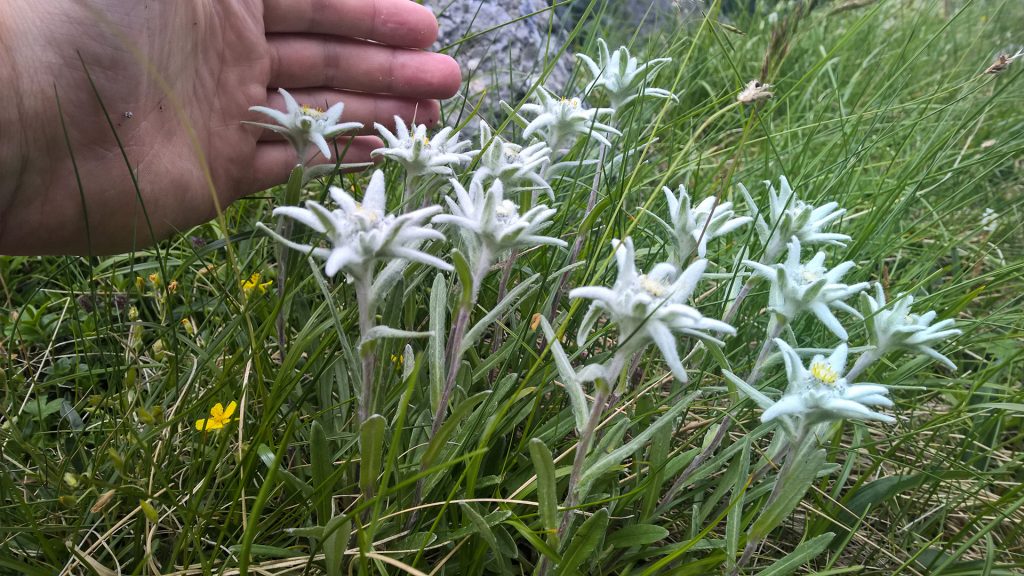Leontopodium alpinum or Edelweiss, is a renowned flower that can be found high in the mountains of Romania, but in other countries as well.
The plant prefers rocky limestone places at about 1,800–3,000 meters altitude. It is non-toxic and has been used in traditional medicine as a remedy against abdominal and respiratory diseases. The dense hair appears to protect the plant from cold, aridity, and ultraviolet radiation.
It is a scarce, short-lived flower found in remote mountain areas and has been used as a symbol for alpinism, for rugged beauty and purity associated with the Alps and Carpathians, and as a national symbol, especially of Romania, Austria, Bulgaria, Slovenia, and Switzerland. According to folk tradition, giving this flower to a loved one is a promise of dedication.
In Romania, it is also known as ”Floarea reginei” or ”The Queen’s flower”. In the local tradition, it’s regarded as a symbol of love and purity and was offered by young men to their beloved ones.
The flower’s common name derives from the German word “Edelweiß“, which is a compound of edel “noble” and weiß “white”. In Romania it is also known as Floare de colț which means Cliffhanger’s flower. In the Italian speaking Alps the flower is referred as “Stella Alpina”, while in the French Alps as “Étoile des Alpes”, both names meaning “Star of the Alps”
The plant’s leaves and flowers are covered with white hairs, and appear woolly. Flowering stalks of edelweiss can grow to a size of 3–20 centimeters in the wild. Each bloom consists of five to six small yellow clustered florets surrounded by fuzzy white “petals” in a double-star formation. The flowers bloom between July and September.
Nowadays, you can spot the Edelweiss in Romania while hiking. If you come across it, leave it there 🙂
Ducu Bertzi, a Romanian folk artist, dedicated of of his songs to the Edelweiss.



